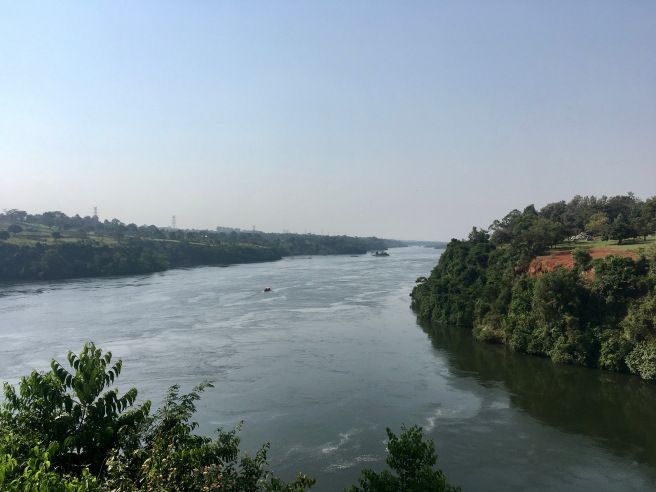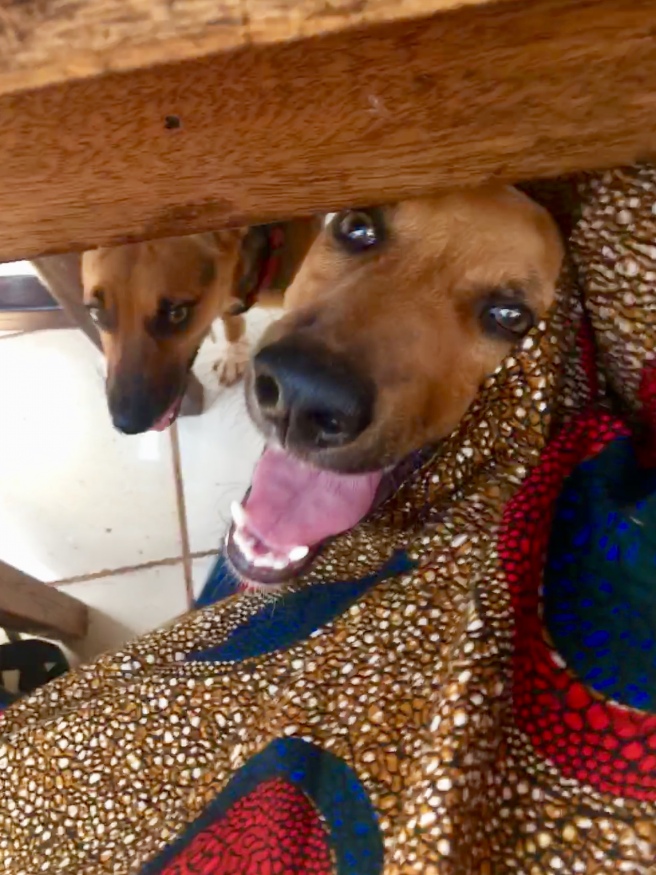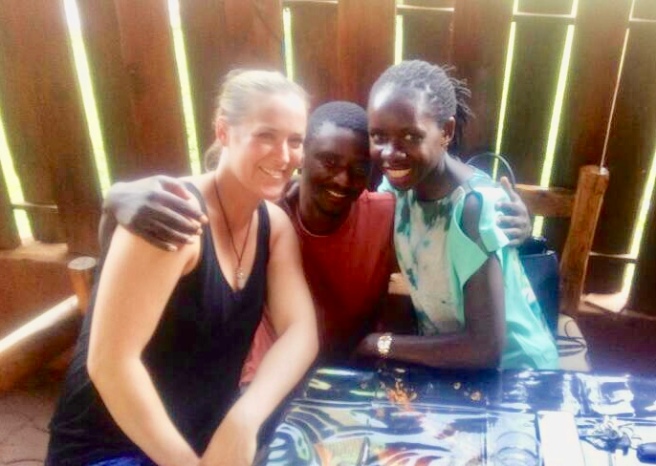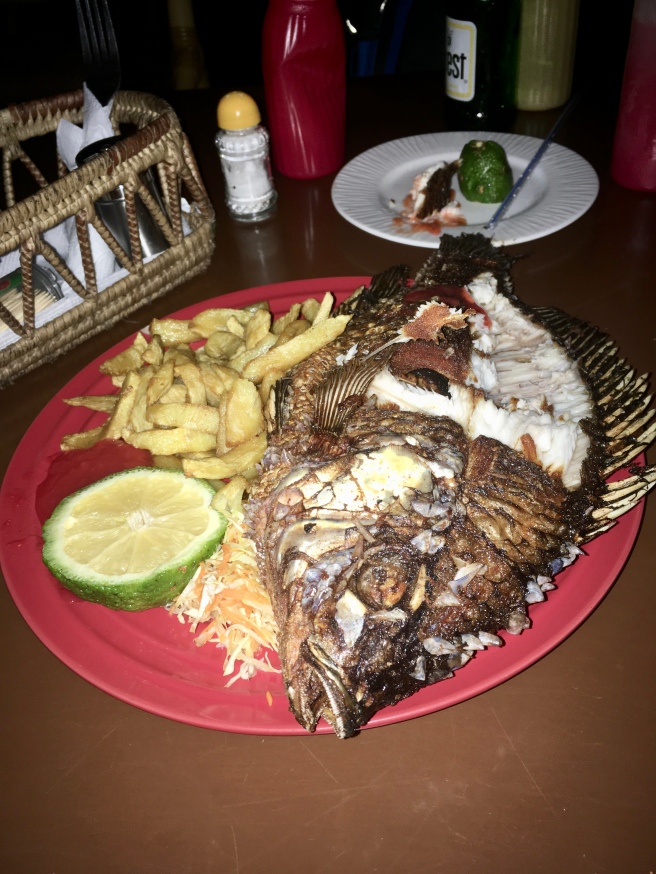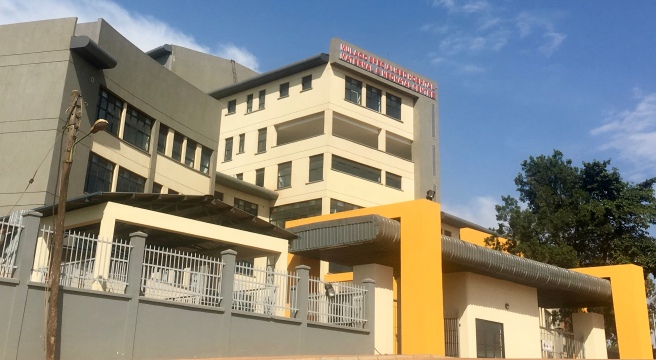I attended the Bethune Roundtable (BRT) for the first time during the first weekend of June. I apologize in advance for what is sure to be a lengthy blog post… I’ll try to keep myself in check!
It’s hard to articulate the way I felt that weekend, especially without sounding incredibly clichéd. I was inspired, educated, motivated, frustrated, overjoyed, overwhelmed, excited, hopeful… you name it, and I probably felt it. There have been so many ideas running through my head that it’s taken some time to reflect and write this post.
The BRT started with a welcome reception on the Thursday evening – it was a great way to start to meet some of the other attendees and the scholarship recipients. I was also able to spend some time catching up with an American anesthesiologist that I met on one of my last days in Kampala.
Friday and Saturday were full days – there was so much to pack into one weekend, and I’m sure the organizers had to make some incredibly difficult decisions about what could and couldn’t be included. They really packed a lot in and the seamless organization made for what was said by many to be the “best BRT ever” (as evidenced by a twitter poll, so it’s gotta be true!). I couldn’t really weigh in on that aspect, as this was my first BRT, but I don’t think it could have been better! Both days started just after 7am. There were a couple of keynote speakers each day, several panel discussions, and afternoon workshops. One thing that I thought was really smart from an organizational point of view was the way the posters were presented. When I had a poster presentation at the CAS meeting last year, I was in a large room filled with posters, where people could walk by and ask questions at their leisure. What the BRT organizers chose to do was have a moderator present a brief summary of the posters (3-4 at a time) just prior to a scheduled break. This way, everyone was able to hear a little bit about the research presented on the posters, and if you wanted to hear more, you could stop by the poster during the break. Obviously, this wouldn’t work if there were too many posters, but the BRT was the perfect sized conference. Really smart. Friday evening, there was a banquet and one of the OB/GYN faculty spoke about the history of Dr Norman Bethune. Another great way to socialize with the other attendees and further the discussions prompted by the day’s presentations. On Saturday, there were locally hosted dinners to allow for smaller groups to gather in a more intimate setting, with incredible home cooked food. I was lucky enough to go to Dr Livingston’s home, and she had made some really delicious Indian food – yum!! I thought the hosted dinners were such a nice personal (and totally East Coast) touch to add to the conference.
I can’t begin to convey how engaging the keynote speakers were…
Dr Meara, the Chair for the Lancet Commission on Global Surgery, spoke about the Lancet Commission, which calls for universal access to safe and affordable surgical and anesthesia care. (Did you know that 5 billion people worldwide don’t have this access??) He was very engaging, and set the tone for the meeting. You can read more at lancetglobalsurgery.org and also check out this youtube video from the Lancet Commission.
Dr Kyamanywa, the Professor of Surgery and Deputy Vice Chancellor at Kampala International University, spoke about training surgical teams in LMIC and the role of global surgery and anesthesia projects. What a great speaker – he had so many quotable quotes!! A couple of my favourites (which may not be exactly correct, but close enough!): “If your theatre relies on sunlight to dry the linens, the priority might be a washer and dryer, not laparoscopic equipment”; “Equipping is different from equipment”; “You need to be able to say no”; and “We need mentors that can inspire”.
Dr Bould, the Chair of CAS IEF (Canadian Anesthesiologists’ Society International Education Foundation), spoke about collective competence in global health. He is one of my favourite speakers. He keeps the audience engaged from start to finish and also has loads of quotable quotes. A couple that particularly stick out in my memory: “Leaders are trained, not born” and “We practice together, but we don’t learn together”. There may be many competent individuals working in the same room, involved in caring for the same patient, but that does not necessarily result in a competent team. He explained how organizational competency is created through team competency that expands outside of the OR team, to include the hospital administration, to then include the larger health care system, to the Ministry of Health, and so on. We are not nearly as effective as individuals (my favourite poem, “No Man is an Island”, keeps running through my head) as we are as partners and teams.
Dr Furey, the co-founder and president of Team Broken Earth, spoke about the amazing story behind the volunteer task force and it’s incredible success. Starting with three friends and an idea, Team Broken Earth started out supporting the relief effort in Haiti after the massive earthquake in 2010 (sobering perspective: the equivalent of the population of St John’s NFLD died in a mere 45 seconds) to continuing collaborative partnerships in Haiti, Bangladesh, and more. They have helped to bring TEAM training courses to those countries (similar to ATLS, but more appropriate for the settings), a course on fracture management (as fractures make up such a huge portion of the burden of disease, especially after natural disasters). He highlighted that “the capacity to engage is there, what’s lacking is the structure.” Inspiring work.
Dame Lavender, a professor of Midwifery and Director of the Centre for Global Women’s Health at the University of Manchester, spoke about the issue of obstetric fistula prevention. I found this to be the most moving talk of the entire meeting. She presented a qualitative study of women before and after their OB fistula repairs, including quotes from interviews. It made such a huge impact to hear how deeply and completely their lives were affected by fistulas, and also highlighted that it’s not all sunshine and rainbows after they’ve had surgical repair. The issues are so complex, it might seem insurmountable, but I think Dame Lavender’s work is heading in the right direction without a doubt.
The panel discussions and afternoon seminars were also very engaging and thought provoking. There was great participation from all attendees, which made for a lot of lively discussion during the breaks and social events.
Major themes that I noticed throughout the weekend:
- 3 delays in access to safe surgical and anesthetic care: delay in decision to seek care, delay in reaching care, and delay in receiving adequate care (after arrival at a care facility). There are many obstacles and challenges to address at each of these 3 delays to enhance the worldwide access to safe surgical care.
- Collaboration: fitting, since this was the theme of the conference. We need to form long-lasting partnerships and collaborate to create sustainable and effective change in the world. This is distinctly different from one country/organization simply donating funds or resources to another at random, or imposing solutions to problems as determined by an outside observer.
- Bi-directional exchange: relating to the creation of sustainable and effective partnerships, an important point is that both parties will benefit. Everyone has something to offer and something to learn, no matter how experienced or smart you are. There are endless opportunities when you change your thinking from a teacher/student model to one of shared learning.
- Measurement: as I quoted above, “you can’t manage what you don’t measure”. There are different ways of determining that statement, but I interpret that to simply mean that there is a need to highlight the importance of data collection and analysis, research, and knowledge translation. Measurements need to be repeated longitudinally to interpret any impact of a new intervention or protocol, for example.
- Mentorship/champions: I think this concept is pretty self-explanatory. You need champions and leaders to make effective progress in any context (as far as I’m concerned). Mentorship is crucial to the development of future champions and leaders. It doesn’t have to be formalized mentorship – the people that I think of as mentors are people that I gravitated towards naturally, often through shared interests. One surgeon from the DRC, Dr Luc, stands out in my memory as an excellent champion for his country. At several separate occasions over the weekend, he described the severe lack of surgical and anesthesia providers in his country. His eagerness to create new partnerships and growth within his country is clear, and he invited other BRT attendees to come spend time working with him in DRC. He didn’t miss a single opportunity.
- Systems: in order to address the global surgical disease burden, we need to tackle the systems that create barriers to change. This means that we need to expand efforts to include government and politics. I’ve never been drawn in by either of those topics, but I’m starting to realize that I can’t avoid it in the career path that I’ve chosen to pursue. (The complex relationship between global health and politics/government is discussed very well in the book An Imperfect Offering by Dr James Orbinski)
A few highlights of the many lessons I learned:
- I have so much to learn (this wasn’t a new lesson, but attending this conference really highlighted how much I need to familiarize myself with… landmark articles, terms, history… the list goes on).
- Access to a facility that provides “Bellwether procedures” is a way to assess the surgical capabilities of a healthcare system, and include cesarean section, emergency laparotomy, and open fracture treatment.
- “Global health” is not synonymous with “international health” (global health concerns the entire world, and it does not mean that you have to leave your own country… this should therefore be a relevant topic to every single healthcare provider, if you ask me)
- Papua New Guinea has more than 800 languages and cultures. I cannot even begin to imagine the communication challenges that both patients and healthcare providers must face.
- It’s never too late, or too early, to get involved in global health. Medical students can get involved (but please make sure to educate yourself and avoid “medical tourism”… ). Residents can get involved. Faculty can get involved. Retired healthcare workers can get involved. The options are endless (clichéd, I know, but true). Read up on the topic (check out the links throughout this blog entry, another good read is Emergency Sex and Other Desperate Measures). Look within your own community and I would be willing to bet that it won’t be hard to identify inequalities in access to healthcare. The social determinants of health exist in every corner of the globe and can create massive disadvantages (or advantages) for a person, through no fault of their own. I don’t condone an “either or” approach to global health – we don’t have to choose between helping another country or our own, between helping an immigrant or a veteran. The goal of improving access to safe surgical and anesthesia care worldwide doesn’t exclude any group!
I’d love to engage in conversation through comments, or on twitter. I am eager to learn more and I strive to keep a very open mind (it is a challenge to hold back from forming opinions sometimes, but I’m trying my best!).
If you ever have the opportunity to attend the Bethune Roundtable, I highly recommend it. I’d be going next year if it wasn’t for the fact that my Royal College oral exams are a few days after the conference. But I’ll be attending again in 2018!
